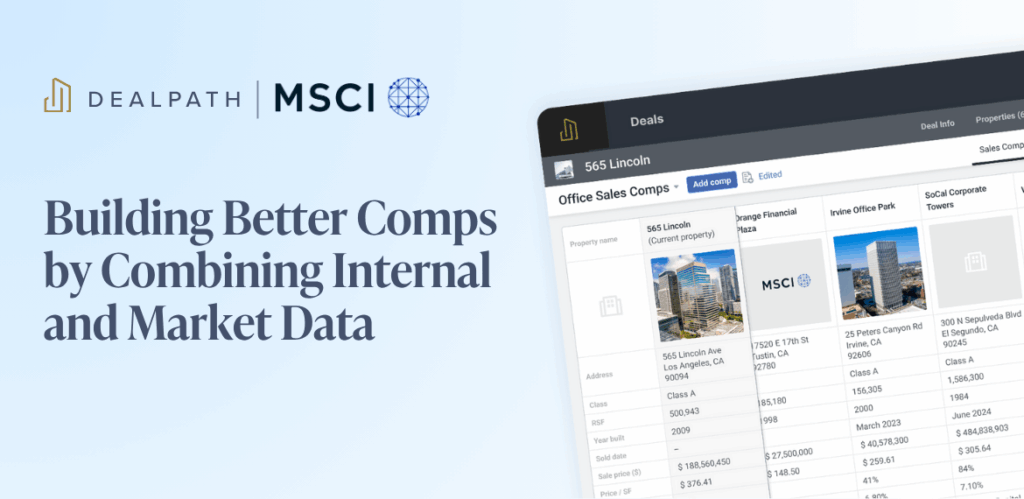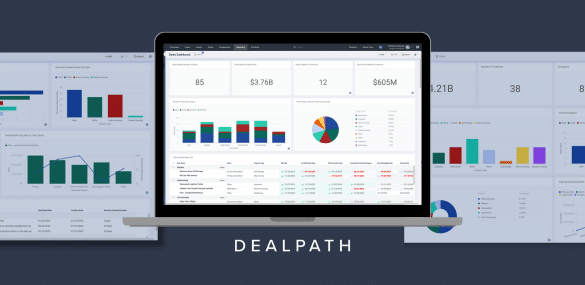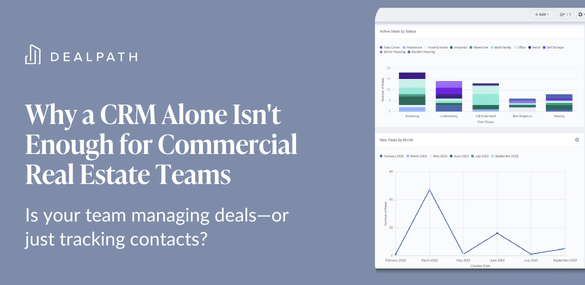This blog post was last updated on Wednesday, September 6th.
Thoughtful investment decisions call for thorough, diligent screenings to ensure that the deal pencils out. Naturally, the profit a property or portfolio generates is top of mind for institutional investors evaluating deals. Among others like IRR and cap rates, one of the most critical metrics investors use to gauge the profitability of a deal is net operating income.
Read on to learn more about what net operating income is, how to calculate it, and its role in real estate pipeline management and investment decision making.
What Is Net Operating Income in Real Estate? [NOI Definition]
Net operating income (NOI) is a real estate valuation method that measures the profitability of a real estate property based on revenue and expenses.
NOI is calculated by subtracting all operating expenses a property incurs from the revenue it generates. The NOI of a real estate property is typically included on its cash flow and income statements.
What Is Not Factored Into Net Operating Income?
While net operating income provides an indication of a property’s profitability, it does not offer a complete picture of the property’s value relative to market trends or risks. The NOI formula fails to consider a few crucial costs, such as:
- Loan payments
- Capital expenditures
- Depreciation
- Amortization
- Taxes
Because NOI does not reflect financing costs, this metric assumes an all-cash purchase, which is rarely the case.
What Does NOI Mean in CRE?
NOI is a metric that helps real estate investors project the income a given property will generate as a means to measure its value and better understand the investment’s risk profile. Ultimately, this helps investors to analyze how returns compare to the costs of owning and operating that property.
Understanding The Net Operating Income Approach
Rather than a variable model that factors in year-to-year changes, NOI assumes that revenue and operating costs will remain constant. To account for annual fluctuations, some investors may choose to defer or accelerate certain expenses or income.
Net operating income is most valuable as a comparative metric and stepping stone toward others, like cap rates and yield on cost. This holistic perspective provides investors with the data and information they need to determine whether or not a deal aligns with their investment strategy.
A property’s net operating income also factors into the debt coverage ratio (DCR), helping investors and lenders alike understand if revenue will cover debt and operating expenses.
NOI Formula: How to Calculate Net Operating Income
The formula for net operating income is straightforward. To calculate NOI, simply subtract a property’s operating expenses from its total revenue:
Net Operating Income = Revenue – Operating Expenses
As an example, let’s assume an investor is considering purchasing a multifamily building.
While the bulk of the property’s revenue will come from rents, there are other income streams to consider, such as parking fees, laundry and more:
- Rental income: $5,000,000
- Parking fees: $250,000
- Laundry machines: $50,000
Based on these assumptions, the building would generate $5,300,000 annually.
Now, let’s assume the building’s operating expenses are as follows:
- Property management fees: $500,000
- Property taxes: $500,000
- Repair and maintenance: $250,000
- Insurance: $250,000
Combined, these costs equal $1,500,000.
Lastly, we can determine the NOI by subtracting the operating costs from the total revenue:
$5,300,000-$1,500,000=$3,800,000
In this case, the net operating income would be $3,800,000.
How to Determine a Property’s Cap Rate Based on Net Operating Income
Investors rarely stop after calculating the net operating income–their next step is often to determine the cap rate. To do so, follow the formula below:
Capitalization Rate= NOI/Current Property Value
For this example, let’s assume the following values:
- NOI: $1,500,000
- Property value: $13,500,000
$1,500,000/$13,500,000=11.1%
In this example, the cap rate would be 11.1%.
Analyzing NOI as a Commercial Real Estate Investor
Let’s consider how an investor might use NOI to evaluate and compare deals.
| Values | Deal #1 | Deal #2 | Deal #3 |
| Total revenue | $1,150,000 | $2,850,000 | $1,900,000 |
| Total operating expenses | $300,000 | $2,100,000 | $900,000 |
| Net operating income | $850,000 | $750,000 | $1,100,000 |
| Purchase price | $10,000,000 | $10,000,000 | $10,000,000 |
| Cap rate | 8.5% | 7.5% | 10% |
In this example, Deal #3 offers the highest NOI. At a 10% cap rate, though, it may present more risk than the investor is seeking.
Deal #2 carries the lowest cap rate, meaning it will provide the most stable revenue of all three deals. For core investors seeking low-risk assets, this may be the most lucrative opportunity.
Finally, deal #1 sits between the two, with a 8.5% cap rate.
While none of these deals is decidedly the best, each may appeal to investors with different risk profiles.
Analyze NOI Alongside Other Key Deal Metrics to Make Informed Decisions
From NOI to cash flow models and beyond, centralizing relevant deal information in one source of truth–together with historical data– provides the clear visibility investors need to make holistic, strategic investment decisions.
Download our white paper, Real Estate’s Tech Boom: Why It’s Time For A Deal Management Solution, to learn more about why deal management software has become the new gold standard for systematizing data-driven decision making.
Download Now


